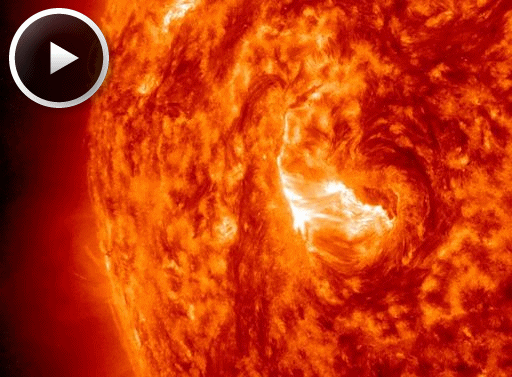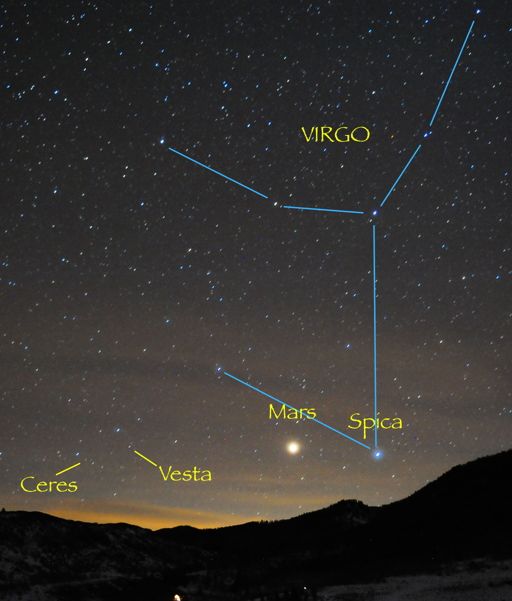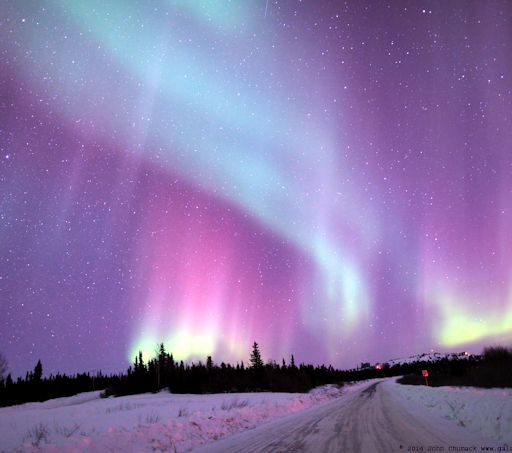When is the best time to see auroras? Where is the best place to go? And how do you photograph them? These questions and more are answered in a new book, Northern Lights - a Guide, by Pal Brekke & Fredrik Broms. | | |
SPACEWEATHER PAYLOAD RECOVERY: Last week, supported by Spaceweather.com, the students of Earth to Sky Calculus launched an experimental Rapid Response Space Weather Balloon to measure cosmic radiation in the stratosphere. On Sunday, March 23rd, a team will recover the payload from its landing site on a 11,000 ft mountain peak in the Inyos of central California. Stay tuned for updates and data.
LONG-DURATION FLARE: On March 23rd around 0330 UT, the magnetic canopy of sunspot AR2014 became unstable and erupted, producing a long-duration C-class solar flare. Although C-class flares are considered to be minor, this one lasted so long (several hours) that it unleashed the energy-equivalent of a much stronger flare. NASA's Solar Dynamics Observatory recorded the action:

Slow flares usually produce CMEs and this one was no exception. The Solar and Heliospheric Observatory (SOHO) recorded a bright cloud emerging from the blast site: movie. The CME appears to have an Earth-directed component that could reach our planet in ~3 days. Stay tuned for updates. Solar flare alerts: text, voice
Realtime Space Weather Photo Gallery
RED MARS, BLUE SPICA, BIG ASTEROIDS: Mars is approaching Earth for a close encounter in mid-April. As the two planets converge, the red color of Mars is becoming increasingly vivid to the naked eye. This is especially true because Mars is located not far from Spica, a blue-giant star of first magnitude in the constellation Virgo. Each evening when Mars and Spica rise side by side in the eastern sky, the red-blue contrast is eye-catching:

Astronomy professor Jimmy Westlake of Colorado Mountain College took the picture on March 20th, the first night of northern spring, and labeled it to show not only "ruddy Mars and icy-blue Spica," but also two nearby space rocks.
"This spring, Mars is looping through the stars of Virgo alongside the large asteroids Ceres and Vesta," explains Westlake. "All three reach opposition next month: Mars on April 8th, Vesta on April 13th, and Ceres on April 15th. Vesta, the nearer and more reflective of the two, appears about a magnitude brighter than Ceres. Both are within easy grasp of binoculars."
Look for Mars and Spica rising in the east after sunset, around 9 pm local time. A backyard telescope pointed at Mars will show you more than a red dot. Mars's north polar cap, surface features and clouds are being photographed by amateur astronomers around the world as the red planet grows larger in the eyepiece every night. Browse the gallery for examples:
Realtime Mars Photo Gallery
SPRING COLORS: For reasons not fully understood by researchers, equinoxes favor auroras. Around the start of northern spring, even small gusts of solar wind can spark bright lights in arctic skies. On March 21st, John Chumack captured an outburst of spring colors over Alaska:

Although solar wind conditions were quiet, "we saw absolutely amazing auroras for 30 minutes outside Fairbanks!" says Chumack. "I took over 450 photos as the lights danced and swayed. It got so bright at times, the snow turned green, red and purple, too."
The solar wind remains relatively calm, but at this time of year it doesn't take much to stir up the lights. NOAA forecasters estimate a 20% chance of polar geomagnetic storms on March 23rd. Aurora alerts: text, voice
Realtime Aurora Photo Gallery
Realtime Comet Photo Gallery
Every night, a network of NASA all-sky cameras scans the skies above the United States for meteoritic fireballs. Automated software maintained by NASA's Meteoroid Environment Office calculates their orbits, velocity, penetration depth in Earth's atmosphere and many other characteristics. Daily results are presented here on Spaceweather.com.
On Mar. 22, 2014, the network reported 2 fireballs.
(2 sporadics)

In this diagram of the inner solar system, all of the fireball orbits intersect at a single point--Earth. The orbits are color-coded by velocity, from slow (red) to fast (blue). [Larger image] [movies]
Potentially Hazardous Asteroids (
PHAs) are space rocks larger than approximately 100m that can come closer to Earth than 0.05 AU. None of the known PHAs is on a collision course with our planet, although astronomers are finding
new ones all the time.
On March 23, 2014 there were potentially hazardous asteroids.
Notes: LD means "Lunar Distance." 1 LD = 384,401 km, the distance between Earth and the Moon. 1 LD also equals 0.00256 AU. MAG is the visual magnitude of the asteroid on the date of closest approach. | | The official U.S. government space weather bureau |
| | The first place to look for information about sundogs, pillars, rainbows and related phenomena. |
| | Researchers call it a "Hubble for the sun." SDO is the most advanced solar observatory ever. |
| | 3D views of the sun from NASA's Solar and Terrestrial Relations Observatory |
| | Realtime and archival images of the Sun from SOHO. |
| | from the NOAA Space Environment Center |
| | the underlying science of space weather |

